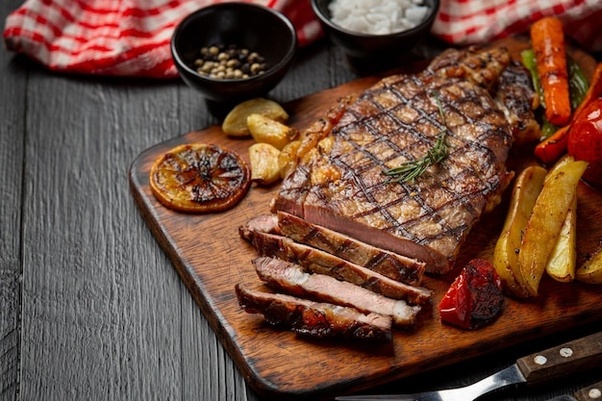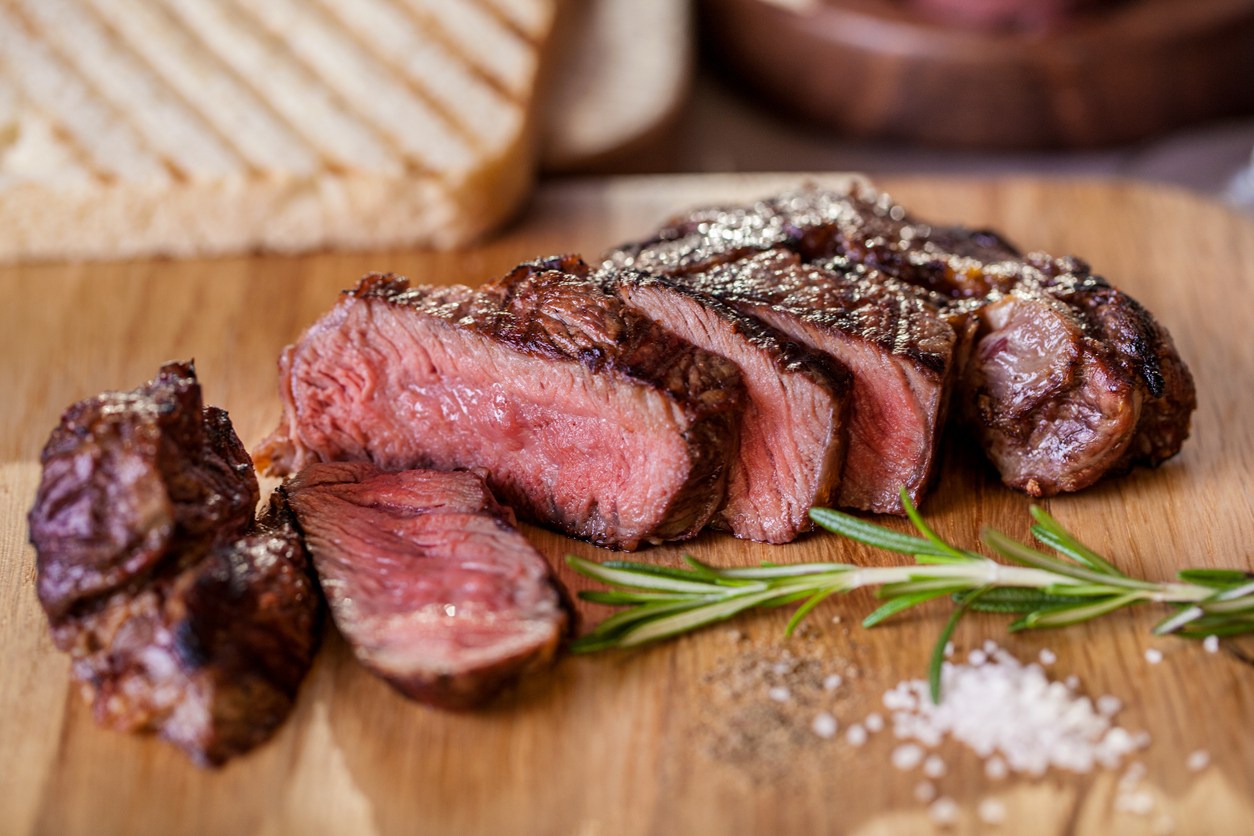Prepare for a Sizzling Surprise: Is Steak Good for Weight Loss?
“Many individuals embarking on a weight loss journey often find themselves questioning the role of various foods in their diet, and steak, a popular choice among meat lovers, is no exception. As a rich source of protein and essential nutrients, steak has been a staple in diets worldwide.
But does indulging in this savoury delight align with the goal of shedding excess pounds? In this exploration, we delve into the question: Is steak good for weight loss? By examining the nutritional content, portion control, and potential impact on overall health, we aim to unravel the complexities surrounding steak consumption and its relationship with weight management.”
The Relationship Between Steak and Weight Loss
The relationship between steak and weight loss is a topic of considerable debate among nutritionists and health enthusiasts. While steak is undeniably a protein powerhouse, providing essential nutrients like iron and vitamin B12, its high saturated fat content and calorie density raise concerns about its suitability for those seeking to shed excess pounds.

When incorporated into a balanced diet in moderation, lean cuts of steak can be part of a weight loss strategy, as the protein can promote satiety and muscle preservation. However, it’s crucial to consider portion size and overall dietary choices to ensure that steak consumption aligns with your weight loss goals and doesn’t undermine them.
Is steak good for weight loss?
The suitability of steak for weight loss depends on several factors, including the cut of meat, portion size, and overall dietary context. Steak is a rich source of high-quality protein, which can promote feelings of fullness and help preserve lean muscle mass during weight loss. Protein also has a higher thermic effect, meaning your body burns more calories during digestion, which can aid in weight management.
However, not all steaks are created equal. Lean cuts like sirloin, tenderloin, or eye of round have less fat and fewer calories than fattier cuts like ribeye or T-bone. Choosing lean cuts and trimming visible fats can significantly affect calorie intake.
Additionally, portion control is key. Eating large portions of steak, especially if high-calorie sauces or side dishes accompany it, can lead to an excessive calorie intake, hindering weight loss efforts.
Lastly, it’s essential to consider the overall balance of your diet. Adding steak to a well-rounded, calorie-controlled diet that includes plenty of vegetables, whole grains, and healthy fats can support weight loss.
The Benefits of Steak for Weight Loss
While steak, when consumed in moderation and as part of a balanced diet, may offer some potential benefits for weight loss, it’s essential to remember that these advantages are contingent on specific factors. Here are some potential benefits:
High-Quality Protein Content:
Steak is an excellent source of high-quality protein. Protein is known to be highly satiating, meaning it can help you feel full and satisfied for longer periods. This can reduce overall calorie intake and support weight loss by curbing unhealthy snacking and overeating.
Muscle Preservation:
Like that found in steak, protein is essential for maintaining and preserving lean muscle mass during weight loss. When you’re on a calorie-restricted diet, your body may break down muscle for energy. Adequate protein intake can help prevent this muscle loss, which is vital for a healthy metabolism.
Thermic Effect of Food (TEF):
The thermic effect of food refers to the calories your body expends to digest and process the nutrients from a meal. Protein has a higher TEF than fats and carbohydrates, meaning your body burns more calories when digestion of protein-rich foods like steak. This can contribute to increased calorie expenditure and support weight management.
Nutrient Density:
Steak is not just a source of protein; it also provides essential nutrients like iron, zinc, vitamin B12, and various minerals. These nutrients are important for overall health and can help maintain energy levels and support your body’s functions while you’re on a weight loss journey.
Satiety and Reduced Cravings:
Consuming steak can help control appetite and reduce cravings for high-calorie, low-nutrient foods. The combination of protein and healthy fats in steak can help stabilize blood sugar levels, preventing spikes and crashes that can lead to cravings.
Versatility in Meal Planning:
Steak’s versatility allows you to include it in various meal plans and recipes. You can pair lean steak cuts with a variety of vegetables and whole grains to create balanced, satisfying meals that align with your weight loss goals.
Choosing the Right Cuts of Steak for Weight Loss
Choosing the right cuts of steak for weight loss is crucial, as different cuts can vary significantly in terms of fat content and calorie density. Here are some lean cuts of steak that are more suitable for weight loss:
Sirloin Steak: Sirloin steak is a lean cut with a relatively low fat content. It’s a good source of protein while being lower in calories compared to fattier cuts.
Tenderloin (Filet Mignon): This cut is known for its tenderness and minimal marbling, making it one of the leanest steak options available.
Flank Steak: Flank steak is another lean choice that is flavorful and versatile. It’s essential to slice it thinly against the grain for tenderness.
Round Steak (Eye of Round, Top Round): These cuts are very lean but may require careful cooking techniques to prevent toughness.
London Broil: London broil is typically made from lean cuts like top round or flank steak. It’s an excellent choice for those looking to reduce fat intake.
Top Sirloin: While not as lean as tenderloin, top sirloin is still a relatively low-fat option compared to ribeye or T-bone steaks.
Final Thoughts
In conclusion, while steak may not be the first food that comes to mind for weight loss, it can be a beneficial addition to a balanced diet. Its high protein content can help increase feelings of fullness and support muscle growth. However, choosing lean cuts and practising portion control is important to avoid excess calories and fat intake.
Additionally, pairing steak with plenty of vegetables and whole grains can further enhance its weight loss potential. Ultimately, the key to successful weight loss lies in overall calorie balance and a varied diet that includes a variety of nutrient-dense foods. So next time you plan your meals, don’t avoid including steak as part of your weight loss journey!
FAQs
Q: Is steak a good food choice for weight loss?
A: Yes, steak can be a part of a balanced weight-loss diet if consumed in moderation.
Q: Can overeating steak hinder weight loss progress?
A: Yes, consuming excessive amounts of steak (or any food) can lead to an excess calorie intake, hindering weight loss efforts.
Q: Are there any alternatives to beef steak that are better for weight loss?
A: If you’re looking for lower-calorie options, consider lean poultry like chicken breast or turkey cutlets as alternatives to beef.



